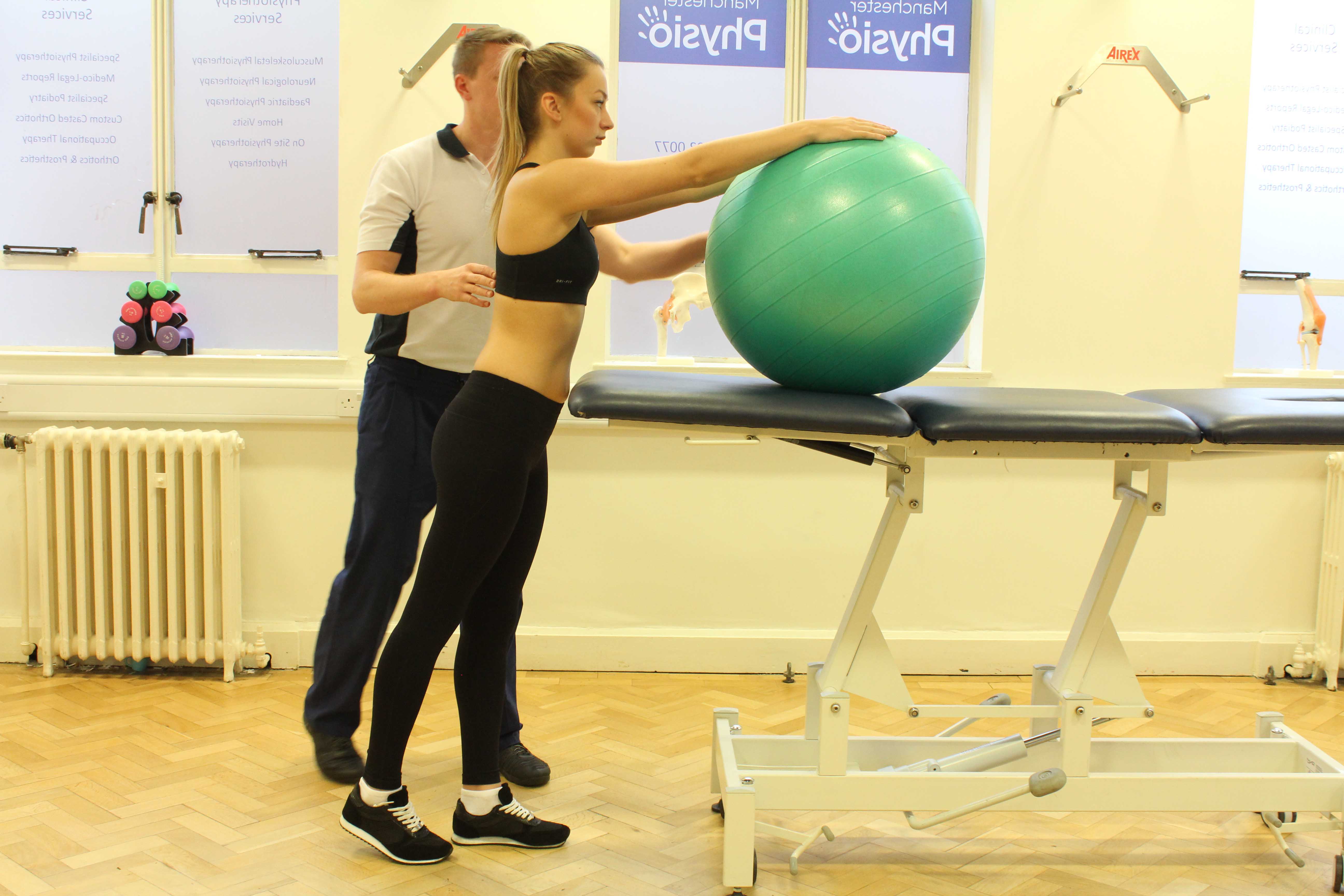What is quadrilateral space syndrome?
Quadrilateral space syndrome is the compression of a nerve and artery causing pain on moving the arm outwards (abduction) and twisting the arm outwards (external rotation). It is a rare condition that is often misdiagnosed.
 Above: Gym ball assisted shoulder stretches under supervision of physiotherapist
Above: Gym ball assisted shoulder stretches under supervision of physiotherapistWhat causes quadrilateral space syndrome?
The quadrilateral space is located on the outside of the shoulder at the top of the arm. It is a small space which the axillary nerve and the posterior humeral circumflex artery pass through. Quadrilateral space syndrome occurs when these structures are compressed. This can be caused by:
- Overuse of the shoulder
- Muscles tightening during abduction and external rotation
- A cyst formed in relation to a labral tear
- A tumour – this is rare
- A haematoma – this is rare
What are the symptoms of quadrilateral space syndrome?
Quadrilateral space syndrome can cause the following symptoms:
- Dull ache in the shoulder
- Pain on abduction of the arm, especially when resisted
- Pain on external rotation of the arm, especially when resisted
- Tender to touch
- Shoulder weakness
- Pins and needles
- Numbness
Physiotherapy for quadrilateral space syndrome
For most quadrilateral space syndrome cases physiotherapy can be very effective. Treatment is focused on rehabilitation and returning to normal function. Treatment may include:
- Cold/heat therapy
- Electrotherapy
- Range of movement exercises
- Stretching exercises
- Strengthening exercises
- Guidance on returning to functional activities
Can quadrilateral space syndrome cause any long-term effects?
In severe cases of quadrilateral space syndrome surgery is required to solve the problem. Physiotherapy is important in rehabilitation following surgery. A full recovery and a return to normal function should be made with effective treatment.
To arrange an assessment with Physio.co.uk please contact us or call 0330 088 7800.

 0330 088 7800
0330 088 7800


































